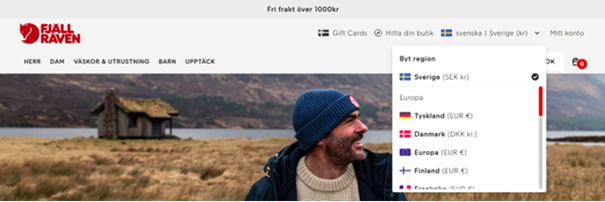When websites offer a multilingual user experience (UX), users can easily navigate, interact with and understand their content – regardless of the user’s language or location.
For example, users can:
- Read the website in their preferred language.
- View prices in their local currency.
- Use payment methods available in their region.
Making your website’s UX multilingual can take quite a bit of work. This is especially true if you have many language users to cater to, or if your website is packed with content and features.
But is the effort worth it?
The answer is yes. In this guide, you’ll learn why, plus how to improve your website’s multilingual UX.
Benefits of multilingual UX
The benefits of providing good multilingual UX include:
More search traffic
Search engines want to serve relevant results to users. This includes results in users’ preferred languages.
Make your content available in these languages, and it’ll stand a greater chance of being ranked higher on – and getting more clicks from – the search engine results pages.
Reducing user drop-offs
Drop-offs happen when users leave your site without completing the action you want them to take (like making a purchase).
This can happen if they encounter something on your website that isn’t customary in their region. Having to enter information in a foreign language is one example.
Providing good multilingual UX minimises these issues, helping users convert more easily.
Foster trust with users
Imagine there are two sites that are identical in every way, except for the language they’re in. One displays text in the visitor’s native language, while the other displays text in a language foreign to them.
Most people might instinctively prefer using the first site. As Fraser Dunk, CEO of customer experience consultancy Jurnii, explains:
“People prefer to browse, purchase and use websites that speak to them locally. They’re more likely to buy from a platform and experience they trust. A localised UX plays a huge part in fostering that trust.”
Increased conversions
When you have more site visitors who trust your brand and can interact with your site easily, increased conversions may follow.
Likewise, when you personalise your content. This makes users more likely to buy, as shared by 75% of consumers who responded to Deloitte Digital’s Marketing Trends of 2025 survey.
So, think more signups and sales, as users enjoy a tailored site experience and convert with less fuss.
How to provide good multilingual UX
Here’s a six-step process for providing good multilingual UX on any website:
1. Adapt all aspects of the user journey
There are at least two approaches to improving a website’s multilingual UX.
- Adapt all of your website’s pages.
- Adapt your website’s user journeys.
Both approaches appear to have the same outcome: a website adapted for local users. But the user journey-centric approach is more effective.
The page-centric approach may lead to you adapting all webpages, regardless of importance, “just because they’re there”. In contrast, the user journey-centric approach emphasises adapting the key pages that users navigate to progress towards an end goal.
It also draws your attention to non-content elements on the page that need adapting, like payment methods, to help users complete the goal.
For a global gaming brand that engaged Jurnii to enhance its website’s usability for Brazilian users, this meant supporting the Boleto payment method, for example.
Jurnii also recommended providing customer service via WhatsApp.
2. Localise your content
Localisation means adapting something for the local context, and it’s a big part of fostering multilingual UX.
If you’re localising text, you’ll typically translate the source content into your audience’s language. Then, you’ll refine the translations to match how your audience would actually say or write them.
“For example, phrases that work well in English can sound too complex when directly translated into Nordic languages,” shares Ninni Kotz, Web Manager at Semantix.
“This is where localisation is important for adapting ideas for the users of the target language, while ensuring the wording used to express them remains clear.”
Sometimes, this can mean rewriting text to incorporate local dialects or slang. But even tweaks to smaller details, like these below, can go a long way:
- Date formats – for example, Brits usually write the day before the month, while Americans do the opposite.
- Currencies – so that users don’t need to convert prices to local currencies themselves.
- Units of measurement – think distance, weight, temperature, and more.
Separately, localise your website’s images and multimedia.
Some assets may just need the text in them translated. In contrast, you may need to overhaul others to depict something entirely different.




